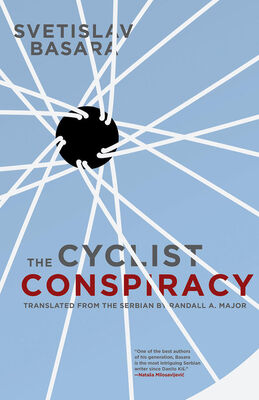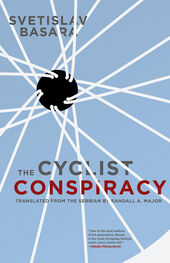On the pages which follow, I present the results of my work.
L. LOENTZE. THE PLAN OF THE GRAND INSANE ASYLUM
For the beginning it is necessary to build an insane asylum with a capacity of 20,000,000 patients. Since a building of such great dimensions (12 mi. x 4 mi. x 6 mi.) is difficult to build on the surface, it is foreseen that eleven of the twelve planned levels will be underground, which is an exceptional position for defense against an aggressor. The hospital is structured like a country and all its citizens are only potentially crazy. It is different from other countries only in the names of its regions; instead of the usual toponyms, diagnostic ones will be introduced: paranoia, schizophrenia, Oedipus complex, guilt feelings, sadism-masochism, neurosis, alcoholism-drug addiction, suicidal tendencies, asocial behavior, complexes, etc . The surface region — neurosis — is the administrative and cultural center of the Grand Insane Asylum. The official ideology of the country is psychoanalysis.
“Subtly stated,” it says in the Basics of Psychoanalysis , “a man is neither crazy nor sane; a man is not anything but, of course, he cannot be told that.” Illnesses of the psyche are nothing other than the consequences of the errant belief that the psyche exists and of the desire to be something. Thus, mental health is just the ability to adapt to that desire. Spiritual strength is not in the will, but in the ability to make the will submissive to desire, that is — to satisfy all desires. For this reason, it is planned that every citizen is to be psychoanalyzed at least once a week.
The surface floor holds a large number of offices for psychoanalysis. In each of them, there is a table and an armchair for the analyst, a copy of Introduction to Psychoanalysis , a tape recorder, a couch for the patient, and the analyst’s picture on the wall. In the hospital, which is the pinnacle of democratization and de-idolization, every citizen will have their own picture on the wall in their room; this is a necessary outcome of the long process of liberating the personality and the attainment of self-consciousness — the triumph of the final creation of the human race. Throughout history, people were estranged from themselves; first they worshiped pictures of God, then of the king, and in the end, Stalin. Both fear and worship were external for centuries. In the Grand Insane Asylum, everyone will be the object of their own adoration and the owner of their own fears.
In the Offices, psychoanalytic sessions will constantly be taking place. Patients confide the past to the analysts who, with the aid of the central computer, ROMA III, find the most suitable possibility for satisfying the most suppressed desires, longings and fantasies; the least painful ways of treating the guilty conscious and other complexes. Cassette tapes are carefully stored in the memory of the computer. So the past of all the inhabitants is materialized in a way. That instills security in the citizens of the Asylum; behind them is not just empty nothingness after all. On the other hand, the all-knowing and all-remembering ROMA III computer makes the secret police and security organs a thing of the past. Everyone answers only to impartial, pure Intelligence. Everything is known about everyone, but no one knows anything about anyone else. Discretion and non-transparency are guaranteed. The progress is obvious: while the early tyrants insisted exclusively on the physical submission of their subjects, later the rulers paid ever more attention to spiritual loyalty and orthodoxy. The computerization of the unconscious is a step forward; it excludes all subjectivity and partiality.
At first glance, it further says in the Basics of Psychoanalysis , the principle according to which everyone is potentially crazy might seem to be inhumane. But that is an illusion. If things are studied a little more carefully, it becomes clear that the Asylum is the most humane and most civilized social system. The Basics of Psychoanalysis do not interpret deviations from so-called “sane” behavior as illness or (even worse) sin, crime, or insanity, rather, all kinds of deviant behavior are considered to be errors arising from an insufficient differentiation of the Ego, and as such are corrected and channeled, not punished. Through the consistent application of these new principles — which the construction of the Asylum will make possible — law, politics, prisons, courts, violence, prostitution — all the evils of this world — will be done away with. There is only the Asylum and “illness”; only the relatively healthy and those under treatment. However, not even the treatment, as it will be seen, will be violent. Psychiatry will also be done away with.
Modern psychiatry is a backward science. It is actually difficult to correctly call it a “science” at all. It is charlatanry or even magic. Its greatest mistake is certainly its incorrect projection of insanity. Mental hospitals are above-ground buildings in which patients are forced, with medicines or torture, to conform to the representation of “the sane.” That is fundamentally wrong. The patient should be offered the possibility of being what he is, no matter what he thinks he is, and then he should be placed on one of the lower floors of the Asylum, deep beneath the earth which is a symbol of the unconscious.
Insanity can be conquered only if it is lived out. So, for example, if someone thinks that he is Napoleon, from storage he is given a hat, a tunic, medals, an office, and orderlies. To his heart’s desire he can issue commands, plan campaigns, until he finally grows bored, if he grows bored. It is a matter of choice. In the section for schizophrenia, constructed on the principle of a gigantic TV studio, all possible settings can be constructed. Starting with Golgotha — where someone with the idée fixe that he is Jesus will be crucified — to western towns, operas, or even haunted medieval castles.
On the other hand, those suffering from paranoia are given a special treatment — they are confronted with reality. They are placed in a situation where their irrational fears become tangible. In the running track-labyrinth, specially built for that purpose, they are chased by hooligans and asocial types. This is doubly useful: confronted with real persecution, the patients are liberated from their unmotivated fear, and the hooligans are able to do a socially useful job and become re-socialized.
A truly important element is the spatial-temporal organization of the Asylum. It was thought to be unjust to force even those who do not wish it to be so into a life within the limits of real space and time, which are relative anyway, as Kant showed. Toward that end, a series of vertical temporal communities is planned, beginning with tribal communities and ending with communist municipalities, thereby connecting the distant past with the even more distant future.
THE GREAT REGION OF SCHIZOPHRENIA
The Great Region of Schizophrenia takes up the largest amount of space in the territory of the Asylum; everything begins and ends there. It is the battlefield of good and evil, of the beautiful and the ugly, of light and dark, of all the contradictions that have created history through the tension between them. The region of Schizophrenia is divided into two halves by an imaginary line. Each of those halves is, from the standpoint of those who live there, good, light and beautiful, while the other half is evil, ugly and dark. Everyone with ideas about progress and fixing the world are sent to this region. In that way, wars are localized and they encompass only those people who live there, while the rest are spared the troubles of the fighting, and this region can even serve as entertainment for them. All those little wars, all that constant pushing and shoving in Schizophrenia, is coordinated by the central computer in cooperation with those who are interested in video-games. A hall with a multitude of monitors is planned, where the players can follow the movements of units and outwit the opposing side through the command panel. Of course, in Schizophrenia itself, no one knows about that; conflicts are justified by ideological motives, even though they are determined by the commonplace whims of the players in the video room. There is nothing inhuman in that either. The world is a game, and death is a biological necessity; if someone wants to die for a great idea, it does not matter to him whether he dies by accident or because of the mistaken plans of one of the players.
Читать дальше






